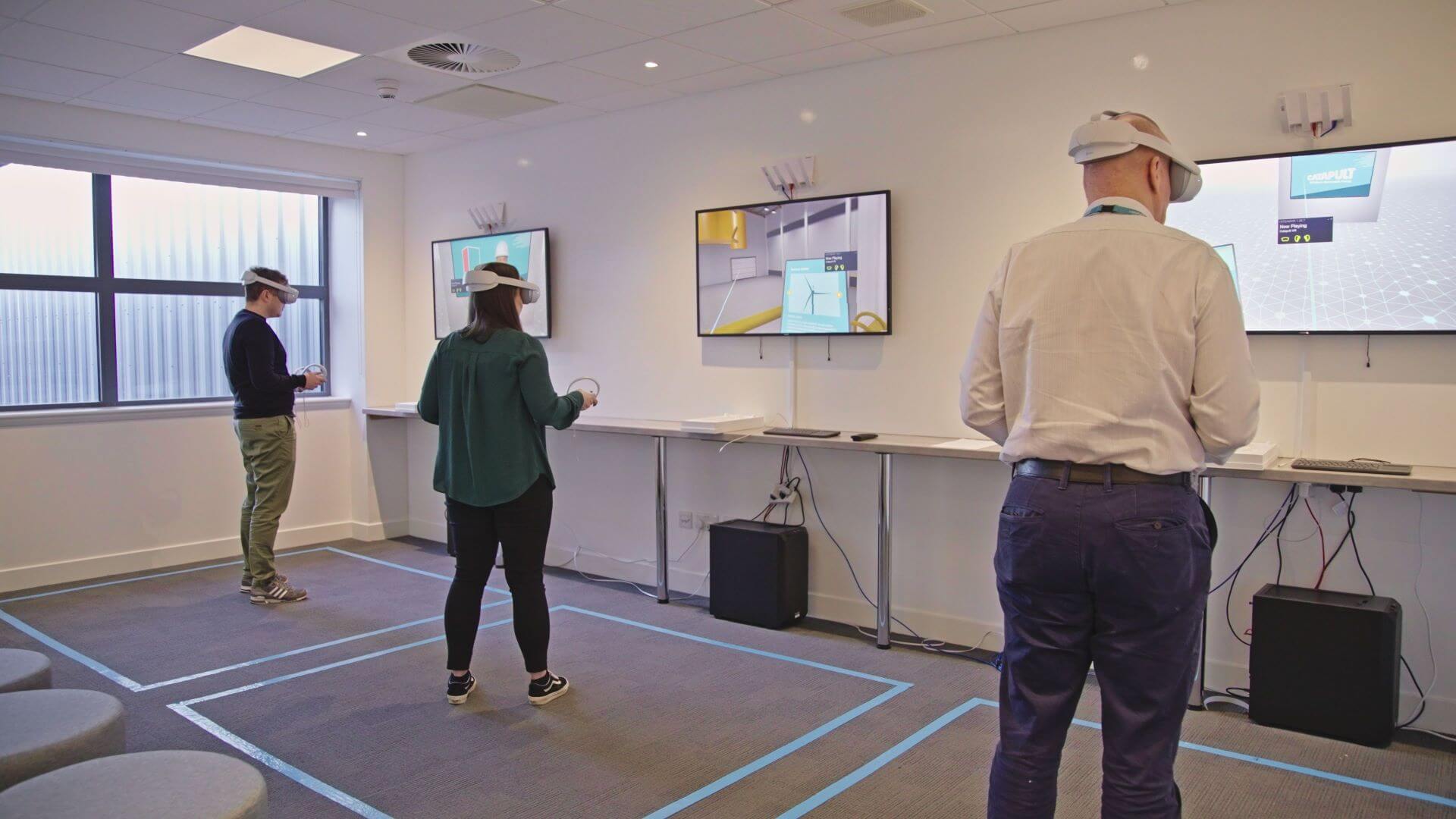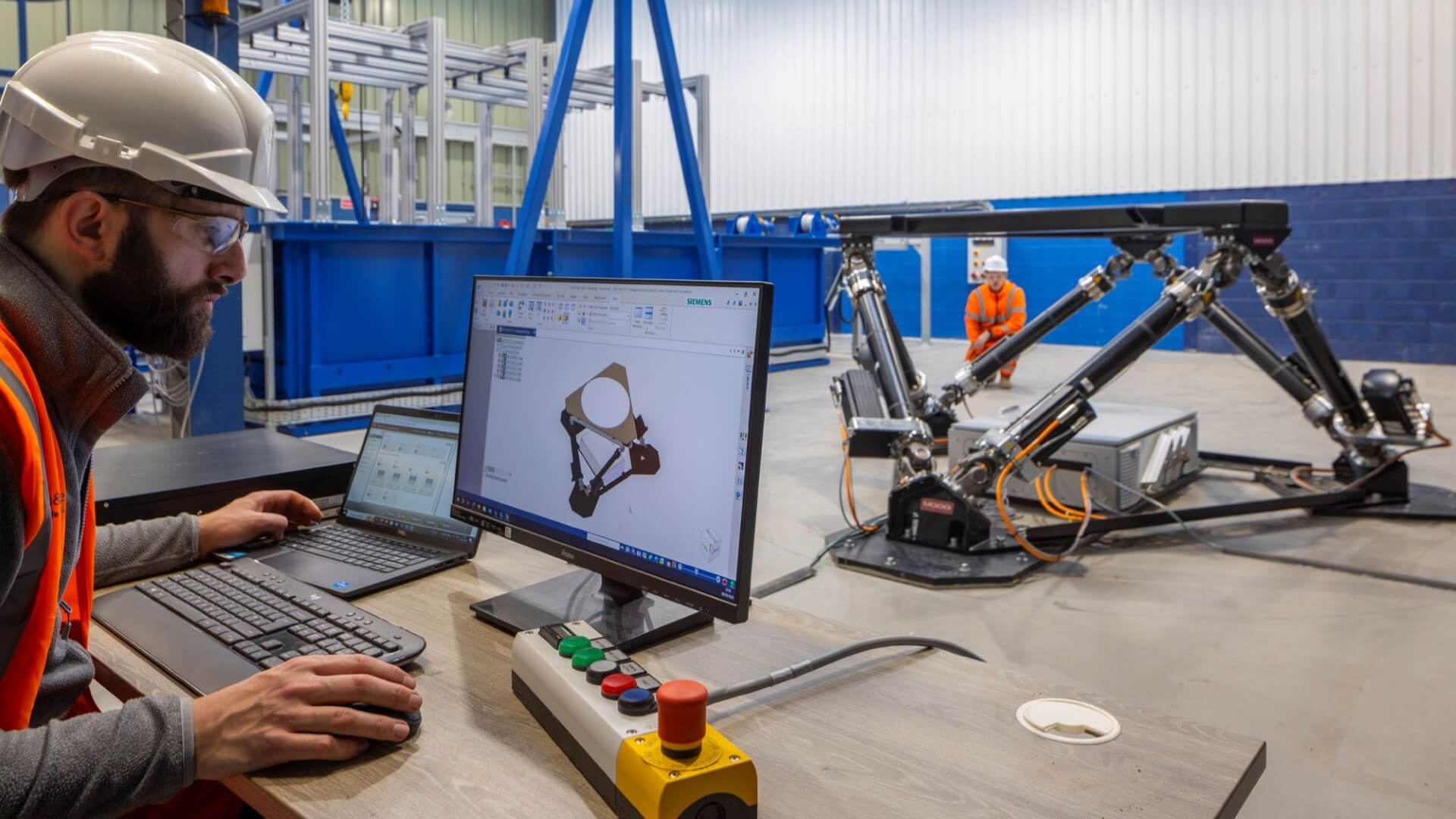UPDATED 1 Sept: The EI library in London is temporarily closed to the public, as a precautionary measure in light of the ongoing COVID-19 situation. The Knowledge Service will still be answering email queries via email , or via live chats during working hours (09:15-17:00 GMT). Our e-library is always open for members here: eLibrary , for full-text access to over 200 e-books and millions of articles. Thank you for your patience.
New Energy World™
New Energy World™ embraces the whole energy industry as it connects and converges to address the decarbonisation challenge. It covers progress being made across the industry, from the dynamics under way to reduce emissions in oil and gas, through improvements to the efficiency of energy conversion and use, to cutting-edge initiatives in renewable and low-carbon technologies.
Floating offshore wind research focuses on improving technology and safety
3/7/2024
10 min read
Feature
Faced with a dynamic motion environment, floating offshore wind turbines experience technical and operational challenges that differ significantly from static offshore oil and gas structures. To improve our understanding of these issues, research and testing has begun at a new Offshore Renewable Energy (ORE) Catapult research centre in Aberdeen. Meanwhile, Energy Institute partner G+, in collaboration with leading international operators and OEMs, is developing guides and standards to help make floating offshore wind safer. New Energy World Features Editor Brian Davis reports.
Despite oil and gas’ long-established track record of developing both fixed and floating offshore platforms, there is still much to learn to overcome the challenges posed to new and emerging floating offshore wind turbine operations.
Also, the latest report by global offshore health and safety organisation G+ highlighted a 39% increase in offshore wind activity in 2023 to a record 61.9 million hours. However, there was concern at the 1,679 incidents reported, a 94% increase from 2022.
Testing and validation of offshore wind floating structures is vital to de-risk operations in challenging and often remote offshore operations. The new national Floating Wind Innovation Centre (FLOWIC) offers scaled-down physical tests, a simulator, virtual reality and digital test facilities.

Virtual reality studio in action at FLOWIC
Photo: ORE Catapult
The FLOWIC facility
ORE Catapult’s £9mn national FLOWIC facility opened in March, located in the heart of Aberdeen’s Energy Transition Zone (ETZ), backed with funding by the Scottish government and Innovate UK. With more than 19 GW of projects in the pipeline through the Scotwind leasing process, and a new leasing round coming up in the Celtic Sea, there are also opportunities worldwide. Early discussions between ORE Catapult, developers and the offshore wind supply chain identified the need for a floating offshore wind facility with an emphasis on physically testing anchors, rigs and cables.
Andy Overton, Head of Business Development, Development & Operations at the ORE Catapult, states that FLOWIC is ‘the world’s first dedicated innovation centre for floating offshore wind’, providing state-of-the-art facilities for companies to develop and de-risk many of the technologies required by this growing sector.
The facility features:
- A dynamic cable flex fatigue test rig – with maximum assembled dimensions 26.5 metres long x 4.55 metres tall x 8.1 metres wide.
- 2x scale anchor test rigs – each 6 metres length x 1.75 metres wide x 1 metre high.
- A hexapod dynamic platform rig – floating offshore scaled motion simulator.
- A virtual reality studio.
At the core of the operations is a 20-strong team of engineers, researchers and support staff.

Using the hexapod dynamic platform rig at FLOWIC
Photo: ORE Catapult
Floating offshore platforms, and the cables that secure them to each other and the seabed, are subject to enormous and variable forces. The dynamic cable flex rig moves a cable back and forth over a period of cycles, depending on the test criteria. To give an idea of the order of magnitude of a test regime, a 1.5mn cycle test could take about six months, but represents approximately 25 years of activity at sea. ‘The stresses induced where the cable leaves the platform or foundation cell have not been tested to this extent before,’ remarks Overton.
The facility can also test moorings and anchors in scaled test rigs, simulating different seabed conditions, such as rock, clay or sand, at different angles.
Though there are cable test facilities in Norway and California, Overton says: ‘There is nothing of this large scale or sophistication. Located in the North East, we’re on the doorstep of companies which have been at the vanguard of oil and gas operations, and hopefully will be at the vanguard of floating offshore wind as well.’
From a capital expenditure perspective, Overton observes that these systems’ cost-effectiveness has so far not been tested, since existing oil and gas systems tend to be over-specified, or ‘gold-plated’. ‘When you’re dealing with a large oil and gas platform or FPSO, you can afford to use the biggest and best anchors and mooring lines. Whereas the economics of floating offshore wind platforms are tighter, and mooring systems are shared between an array of 40 or 50 wind turbines, in different water depths and sea conditions. So you can’t afford to gold-plate [these] systems.’
Consequently: ‘Everything needs to be the right size, and the test validation facilities can provide a controlled, scientific environment for sustained testing, before floating wind turbine is put offshore,’ he says.
‘Located in the North East [of the UK], we’re on the doorstep of companies which have been at the vanguard of oil and gas operations, and hopefully will be at the vanguard of floating offshore wind as well.’ – Andy Overton, Head of Business Development, Development & Operations at the Offshore Renewable Energy (ORE) Catapult
The first anchor test commissioning project is being carried out with Newcastle University. Discussions are also under way with commercial anchor companies. Traditionally, anchor drag tests were carried out using a tractor on a beach. Whereas the new test facilities will be able to test a variety of anchors and moorings in a variety of simulated seabed surfaces, indoors in a controlled environment.
FLOWIC can simulate the complex motion of the seas with a hexapod, which resembles an aircraft simulator. Manufactured by Dutch company Moogs, the robotic manipulator is capable of moving a payload of up to 1,800 kg with six degrees of movement – X, Y and Z plus pitch, roll and yaw, and is capable of testing an object with maximum dimensions of 4 metres length by 4 metres breadth. It features an electrical pneumatic power system for motion, with in-situ load sensors and data logging for condition monitoring and ensuring that control and safety systems operate appropriately.
Recently, FLOWIC worked on a project with PICT Offshore, a Scottish firm which develops and builds a ‘Get up safe’ system, using a winch rather than a ladder to transfer personnel from boats to offshore wind turbines. Testing is seen as essential to de-risk transfer from a vessel to a floating wind turbine, and the PICT system was simulated at the Centre’s Opening Day.
Beyond physical rigs, collecting data, digitalisation of test regimes and digital twin modelling also play an important role in the facility’s research regimes. ‘The FLOWIC team is particularly active in data integration, including digital twinning, and we currently have two separate projects ongoing in this area. One project is focused on modelling the dynamic cable flex fatigue test rig in Orcaflex software, while the second uses finite analysis to model the simulated loads on a power cable for a full cycle (up to six months duration) while the cable undergoes testing in the rig,’ Overton explains.
For some modelling, the facility works with the Net Zero Technology Centre (NZTC) in Aberdeen and the National Decommissioning Centre in Newburgh, Aberdeenshire, as well as other Catapult research centres across the UK. However, the centre is not simply a platform for new test and validation technology but offers ‘brain power and expertise’, says Overton, that encourages a collaborative approach to the sector for operators, developers, regulators and other interested parties.
G+ highlights room for improvement
G+ is a global health and safety organisation serving the offshore wind industry. It is run in partnership with the Energy Institute (EI), which provides the secretariat. Members include the world’s largest offshore wind developers and wind turbine generator original equipment manufacturers (OEMs). Across the board, G+ sees room for improvement when it comes to floating offshore wind turbine operations.
In particular, G+ points out that operations on offshore oil and gas facilities have less consideration of the motion and dynamic environment involved in floating offshore wind. The oil and gas platforms are more stable and the topsides tend to be much smaller. For floating environments, G+ is addressing gaps in safety guidelines related to motion sickness, working in a dynamic environment, working at height and safety issues around platform access.
Publication of the G+ HAZID report (in 2022) on floating offshore wind helped the industry identify where hazards might lie for floating offshore wind operations. The report considers governance and legal issues, existing good practices and the lessons learnt when managing floating assets. The report is free to download for Energy Institute members.
Last November, G+ ran the G+ ‘Safe by Design’ workshop on floating offshore wind. In April 2024, G+ published the scoping review: Examining the impact of floating wind turbines on the human operator, following a study of floating offshore wind turbine motion dynamics with the University of Portsmouth. According to the review, the motion experienced by floating offshore wind turbines is likely to be associated with low-frequency vibrations (<0.5 Hz), which have been linked to physical and cognitive performance degradation, which can manifest in postural instability, motion sickness and motion-induced fatigue.
Kate Harvey, General Manager of the G+ Global Offshore Wind Health and Safety Organisation, notes that transfer between vessels and offshore wind turbines is a ‘hot topic’ at the moment. A report is due to be published this month resulting from a ‘walk to work’ (W2W) workshop held by G+ with the International Marine Contractors Association (IMCA), following an alert from the Health and Safety Executive (HSE) of a risk of serious injury from motion-compensated gangways after there were a couple of incidents (see some examples listed under ‘gangway’ in the EI’s Toolbox).
The new W2W report calls for ‘greater ownership by wind farm owners and developers of the end-to-end safety management of W2W applications, including the W2W equipment, vessel, interface with the structure, procedures, maintenance, training, emergency response and assurance activities which collectively provide an acceptable safety level’.
Indeed, the report highlights: ‘There is a need for an overarching safety management approach [to floating offshore wind turbines and W2W] that integrates the various elements of design, process, training, etc.’ Furthermore: ‘There is little standardisation in the industry and significant variation in design press (DP) ratings in wind, vessels and W2W systems; and need for an increased focus on the discipline of human factors; as well as insufficient guidelines and standards.’
Harvey adds: ‘We have seen a rise more generally in transfer-related incidents from the 2023 dataset that was published in June. We also had members wanting to use baskets to transfer people and the HSE objecting to this. Therefore, we did a review of all means of transfer and updated our good practice recommendations.’
The Energy Institute’s Lydia Malley will be speaking about developing the offshore wind workforce in a free-to-attend webinar panel discussion on Tuesday 9 July at 10:00am as part of Net Zero Week.
- Further reading: ‘Floating offshore wind projects grow by one-third in a year’. The total global pipeline of floating offshore wind projects has grown significantly in the last 12 months in terms of capacity – from 185 GW a year ago to 244 GW now – according to a 2023 report from RenewableUK.
- Key sessions at All-Energy 2024 in Glasgow addressed the challenges and opportunities for UK North Sea offshore wind developments, looking to answer the question: How realistic are UK offshore wind ambitions?
